Butterfly valves belong to the quarter valves category. Quarter valves include the type of valves which can be opened or shut close by turning the stem of the valve by a quarter. In butterfly valves there is a disc attached to a rod. When the rod is turned it rotates the disc by a quarter such that the disc falls perpendicular to the flow and stops it. And to restore the flow, the rod rotates the disc back to the original position i.e. away from the flow. Read More…
Butterfly Valves & Controls, Inc. has been a premier supplier of quality butterfly control valves and other related industrial components for 25 years. We carry only the best parts sourced from world-class butterfly valve manufacturers. Extended service life and safe operation are at the core of every valve manufactured/assembled. Our catalog includes a large selection of valves, actuators,...
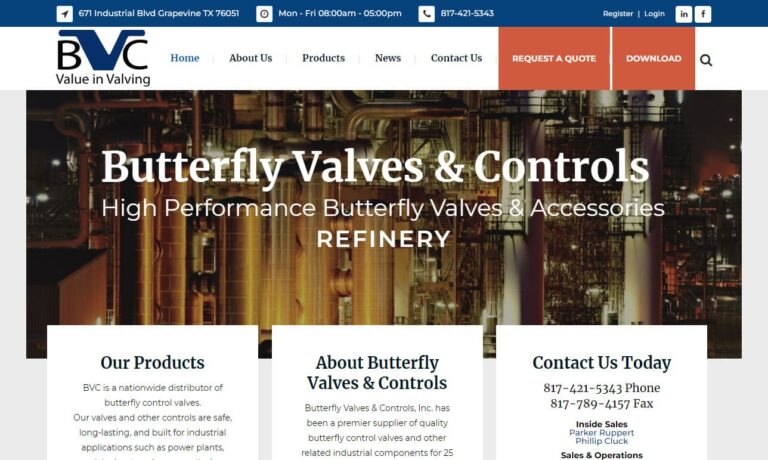
MDC Vacuum Products manufactures vacuum components. Our butterfly valves are low outgassing. The Del-Seal™ mini butterfly valves have a stainless steel internal surface, aluminum handle, metal seal or elastomer O-ring seal flange. Our Kwik-Flange butterfly valves are ISO KF flanges. Seal kits are available.
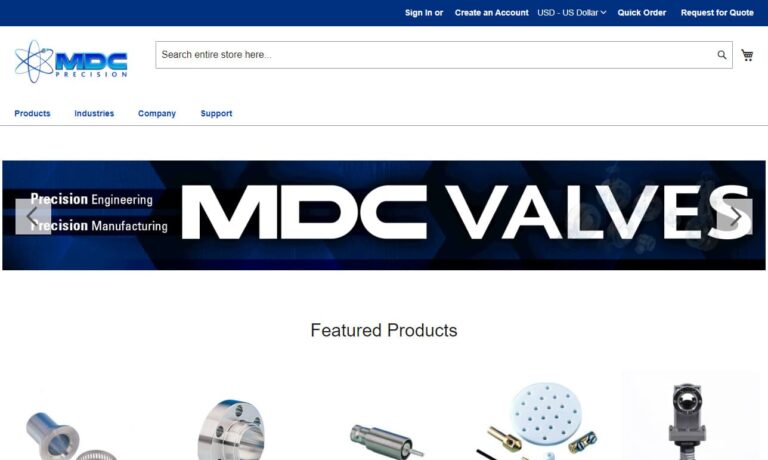
Nor-Cal Products is a leading distributor and manufacturer of isolation and throttling butterfly valves. Products and components are used for semiconductor, research and thin film deposition applications, as well as many others. We have earned worldwide recognition for our quality stainless steel butterfly valves.
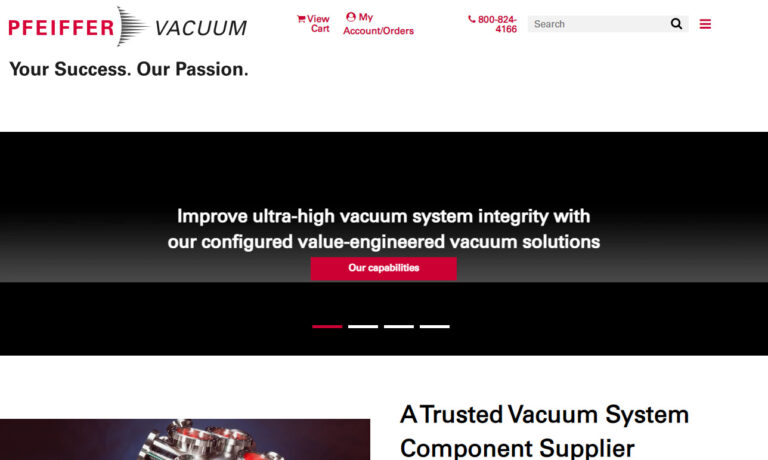
DynaQuip Controls has been committed to producing excellent products for more than 40 years. We provide both automatic and manual ball valves. Some of our ball valve products include stainless steel ball valves, brass ball valves, high pressure, 2 and 3 way ball valves, screwed-body and mini valves.
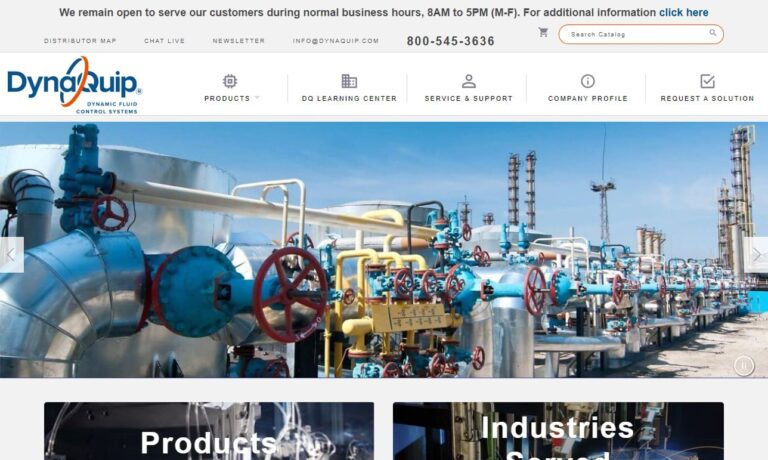
More Butterfly Valve Manufacturers
Butterfly valves are a popular choice due to their ease of installation, low cost, and wide range of available sizes. They are commonly used for both regulation and on-off control purposes.
Butterfly Valve Applications
Butterfly valves play a crucial role in various industries due to their versatility in controlling the flow of liquids, gases, and slurries. They can effectively start, stop, or modulate flow, making them essential for numerous applications.
Industries that commonly use butterfly valves include food processing (liquid), waterworks, irrigation, pipe fabrication, industrial manufacturing, heating systems, and chemical transport.
Some specific applications for butterfly valves include:
- Vacuum systems
- Petroleum recovery
- Compressed air services
- Air and water cooling
- HVAC systems
- Slurry handling
- High-pressure water services
- High-temperature water services
- Steam services
- Fire protection
Their extensive range of designs and materials makes butterfly valves adaptable to a variety of situations, from handling plain water to abrasive slurries. Typical uses include:
- Slurry and sludge applications
- Vacuum services
- Steam services
- Cooling water, air, or gas applications
History of Butterfly Valves
Scottish engineer and chemist James Watt was among the first to use the butterfly valve, incorporating them into his steam engine designs in the late 1700s. However, it wasn’t until the 1870s that butterfly valves were widely adopted, as engineers began using them to control air and steam flow in fans and turbines.
Over time, manufacturers improved butterfly valves, making them smaller, lighter, more powerful, and more heat-resistant. A significant advancement came after World War II, when engineers introduced synthetic rubber seals that expanded the range of applications for butterfly valves.
In 1969, American inventor James E. Hemphill patented a new butterfly valve design that reduced the hydrodynamic torque required to operate the valve, enhancing its efficiency.
Advantages and Disadvantages of Butterfly Valves
Butterfly valves provide numerous benefits to users. Firstly, their compact design allows them to occupy less space compared to many other valves, making them ideal for installations where space is limited. Additionally, butterfly valves require minimal maintenance due to their simple construction and fewer moving parts. They offer reliable flow blocking with minimal leakage and are easy to operate when needed. Furthermore, butterfly valves are cost-effective, making them an economical choice.
Advantages of Butterfly Valves:
- Compact Size: Their small size and design make them inexpensive to install and occupy minimal space.
- Efficient Actuation: Automatic actuation enhances speed and efficiency compared to other valves.
- Low Maintenance: With fewer moving parts and durable disc designs, they require less upkeep.
- Versatility: Various seating materials allow them to function in diverse environments, including abrasive conditions.
- Cost-Effective: They require less material and are easier to design and manufacture, often proving more affordable than other valve types.
- Application Flexibility: Suitable for various applications, including underground installations.
Disadvantages of Butterfly Valves:
Despite their advantages, butterfly valves have some drawbacks that should be considered:
- Disc Interference: Even when fully open, a portion of the disc remains in the flow path, potentially affecting flow and pressure.
- Sealing Limitations: The sealing effectiveness may not match that of other valve types.
- Limited Throttling: They are best suited for low pressure differential services.
- Flow Issues: There is a risk of choked flow or cavitation with butterfly valves.
Design of Butterfly Valves
Valve Materials
Manufacturers typically produce butterfly valves using plastic, stainless steel, or cast iron, with aluminum being an occasional alternative. Each material offers different performance characteristics suited to specific applications.
Plastic, while a cost-effective option, is the least frequently used material for butterfly valves. Its inability to withstand harsh chemicals or high pressures limits its use in certain applications.
Stainless steel is more durable compared to other metals, including untreated steel, and is easily cleanable, making it ideal for applications where sanitation is crucial. Cast iron is preferred for the most demanding uses due to its strength and ability to withstand high pressure when the valve is closed.
Butterfly valve bodies can be made from cast iron, ductile iron, aluminum, carbon steel, stainless steel, and various exotic metals.
The materials used for the valve disc include ductile iron, stainless steel, aluminum, bronze, epoxy-coated, and nickel-plated options. Since the disc is exposed to the fluid flow, its material must be carefully selected to ensure compatibility with the fluid and prevent any adverse interactions.
Butterfly Valve Construction
Butterfly valves are characterized by several key components: the body, disc, stem, seat, and actuator. The actuator, often a lever, allows operators to adjust the disc’s position.
The valve body is mounted between two pipe flanges, with the most common designs being lug and wafer types.
The disc functions similarly to a gate in gate valves, a plug in plug valves, or a ball in ball valves. When the disc rotates 90° to align with the fluid flow, it opens, allowing the fluid to pass through. Rotating the disc back to its original position closes the valve and blocks the flow. Manufacturers can adjust the disc’s orientation and design to influence operating torque, sealing, and flow characteristics.
The stem acts as a shaft and can be either a single piece or a split stem, which is composed of two parts.
The seat, which is attached to the body through pressing, bonding, or locking, is typically made from polymer or elastomer. Its purpose is to provide a reliable shut-off for the valve. The force required to close the valve is known as “seating torque,” while the force needed to rotate the disc is referred to as “unseating torque.”
Actuators, which can be mechanical or automatic, control the flow by repositioning the disc. When the disc is closed, it covers the valve opening, causing a pressure drop as the fluid constantly contacts it. To allow fluid flow, the actuator must turn the rod a quarter turn to reposition the disc.
Types of Butterfly Valves
Butterfly valves come in various types and series, each designed for a specific purpose. These include high performance butterfly valves, pneumatic butterfly valves, butterfly valves with multiple shut-off points, triple offset butterfly valves, flanged butterfly valves, wafer style butterfly valves, lug butterfly valves, traditional butterfly valves, electric butterfly valves, AWWA certified butterfly valves, plastic butterfly valves, stainless steel butterfly valves, and aluminum butterfly valves.
Pneumatic Butterfly Valves are ideal for pressurized air systems that operate at lower pressures.
Butterfly Valves with Multiple Shut-Off Points are suitable for more complex systems requiring multiple shut-offs.
Triple Offset Butterfly Valves
These valves provide a tighter seal due to their three offset mounting positions, ensuring no leaks.
Traditional Butterfly Valves
Operated manually with a control lever.
Electric Butterfly Valves
Controlled electronically using direct mount electric actuators, making them perfect for automated systems.
AWWA Certified Butterfly Valves
Meet the safety and efficiency standards of the American Water Works Association, typically made from cast iron or ductile iron with a rubber or stainless-steel seat. They are often used for potable water systems due to their compliance with human consumption standards.
Plastic Valves
Made from thermoplastic materials, offering high flexibility and low cost but lacking in thermal stability and pressure resistance compared to metal valves.
Stainless Steel Butterfly Valves
Used in applications where corrosion and oxidation resistance are crucial for consistent performance. They are also easy to clean and suitable for food and medical applications.
Aluminum Butterfly Valves
Valued for their strength and lightweight properties, though they are not corrosion-resistant.
High Performance Butterfly Valves
Designed for systems with extremely high pressure or hazardous materials, often as double offset valves.
Wafer End Type
Feature four holes that align with the connected pipe and are clamped between two flanges. Easy to install but not ideal for pipeline ends.
Wafer Style Butterfly Valves are installed between two flanges with nuts and bolts, held in place by the pressure from the flange nuts. They are among the most common butterfly valve types.
Lug End Type
Lug butterfly valves have a body with projecting lugs around the perimeter, allowing them to be bolted to pipe flanges similarly to through flanges. These valves can be used for end-of-line service, but a blind flange is recommended. Lug butterfly valves feature threaded metal inserts inside the bolt holes, enabling bolts to be installed without nuts. This design allows for connecting and disconnecting piping systems from one side without affecting the other side.
Flanged End Type
Flanged butterfly valves have bodies with flanges compatible with pipe flanges, making them easier to install or remove by simply bolting them together. These valves are a variant of butterfly valves that connect using flanges, featuring raised or winged edges for secure bolting between two pipes.
Butt Welded End Type
In butt-welded butterfly valves, the angled ends of the pipe and the straight end of the valve are welded together to create a butt-weld connection. This type of connection is suitable for high-pressure environments as the direct welding ensures a secure connection.
Manually Actuated Butterfly Valve
Manually actuated butterfly valves require human input for operation, making them cost-effective. These valves are further divided into two types based on the manual actuator used.
Automatic Butterfly Valve
Automatic butterfly valves are actuated automatically and can be remotely managed. They do not require human interaction for normal operation, making them efficient for controlling larger valves quickly. These valves often come with a fail-safe option and can be managed manually if needed. There are three types of automatic actuators.
Concentric Butterfly Valves
In concentric butterfly valves, the stem passes through the center of the disc, causing parts of the disc to always be in contact with the seat when opening or closing. This configuration subjects the seat to friction each time the valve is used. Concentric butterfly valves are the simplest design, suitable for low-pressure environments.
Eccentric Butterfly Valves
Eccentric butterfly valves have the shaft positioned behind the disc instead of through its centerline, with the shaft located opposite the flow. This shaft-to-disc configuration forms the basis of three types of eccentric butterfly valves:
- Single Offset Valves: The shaft is offset from the body centerline, reducing seal wear by minimizing disc contact with the seal before closure.
- Double Offset Valves: The shaft is offset from both the body and pipe centerlines, ensuring the disc only slightly rubs against the seal (about one to three degrees).
- Triple Offset Valves: In addition to the double offsets, these valves have a conical offset where the disc connects to the seal, enhancing efficiency and wear resistance. Triple offset valves often use metal seats for a bubble-tight shut-off.
Butterfly Valve Installation
Before installation, always test and thoroughly inspect your valves to ensure there are no weak points. Follow the instructions provided by your valve and flange manufacturer during the installation process.
Butterfly Valve Standards and Specifications
Butterfly valves are used across a wide range of industries, leading to a variety of standards set by numerous regulatory organizations. In the United States, these include ASTM International, the American Petroleum Institute, the American National Standards Institute (ANSI), the Manufacturers Standardization Society, and the American Society of Mechanical Engineers. Internationally, standards are set by organizations such as EEMUA and BSI in the United Kingdom, DIN in Germany, ISO (International Organization for Standardization), CSA in Canada, the European Committee for Standardization, and JSA in Japan.
Things to Consider When Purchasing Butterfly Valves
If you are looking to purchase butterfly valves for your application, we recommend connecting with a reputable manufacturer. To assist you, we’ve compiled a list of some of the top butterfly valve suppliers in the industry. Scroll to the middle of this page to find the profiles and contact information of these companies.
Before browsing our list of butterfly valve manufacturers, take a moment to jot down your specifications. This will help streamline your search and your discussions with potential suppliers. Ensure your specifications list includes details such as your delivery deadline, budget, standard requirements, and customer support preferences. Once you have these written down, review our list of suppliers. Based on your specifications, select three or four manufacturers that interest you the most. Reach out to each of them to discuss your application. After speaking with them, compare and contrast your conversations and the services each company offers to determine the best fit for your needs.
When designing a butterfly valve, it is crucial for manufacturers to consider the properties of the liquid or gas the valve will control once installed.
Based on application specifications, manufacturers can produce butterfly valves in a variety of standard and custom sizes, along with a wide range of hardware options. For instance, they may design the shaft as two pins rather than a single solid rod in some cases. To explore your custom options, consult with a butterfly valve supplier.

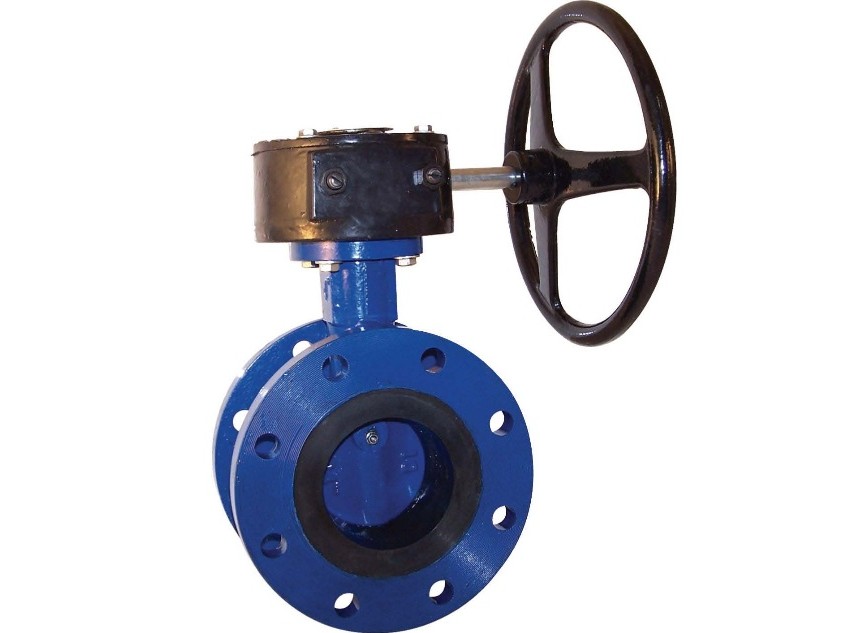
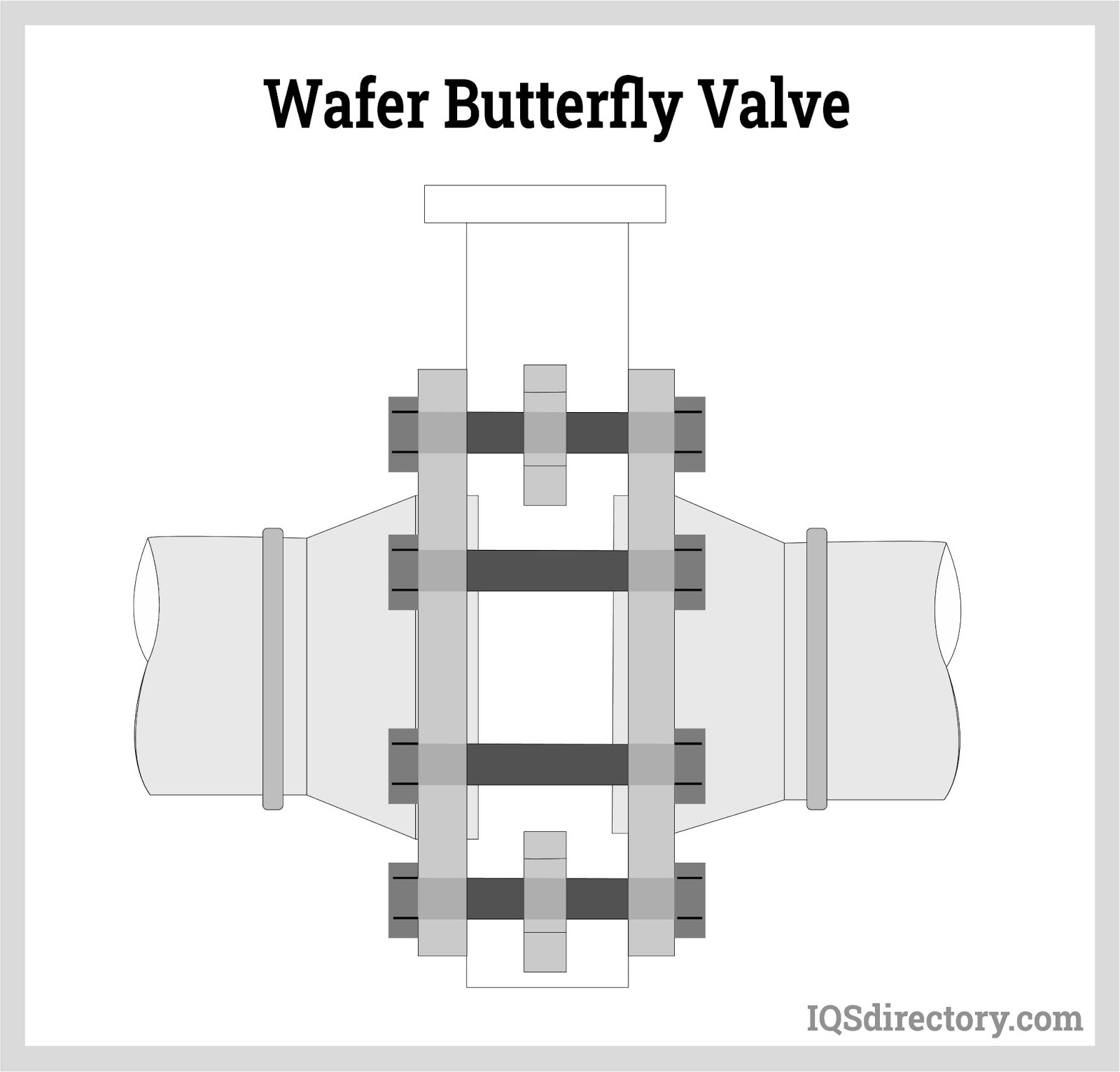
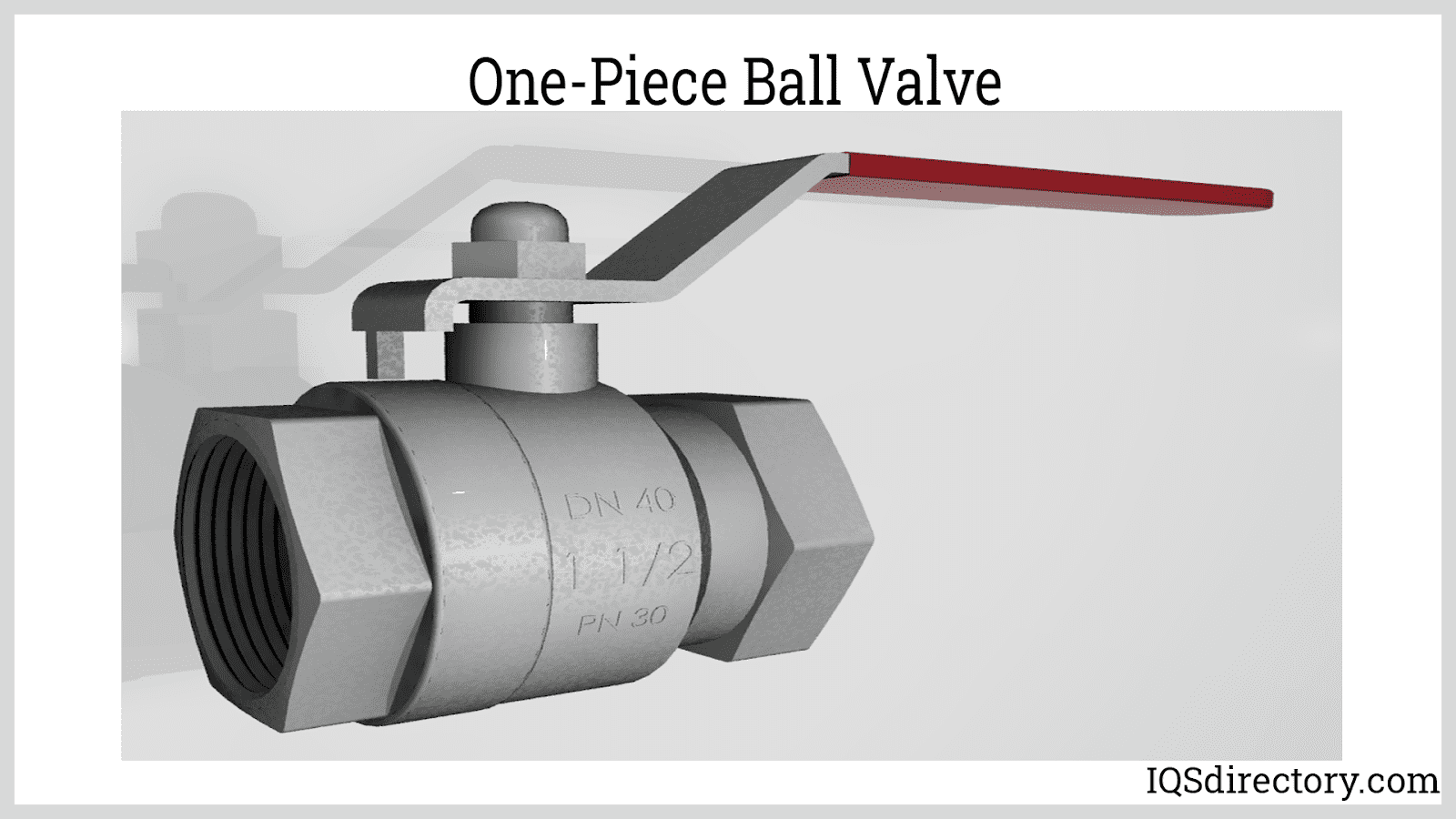
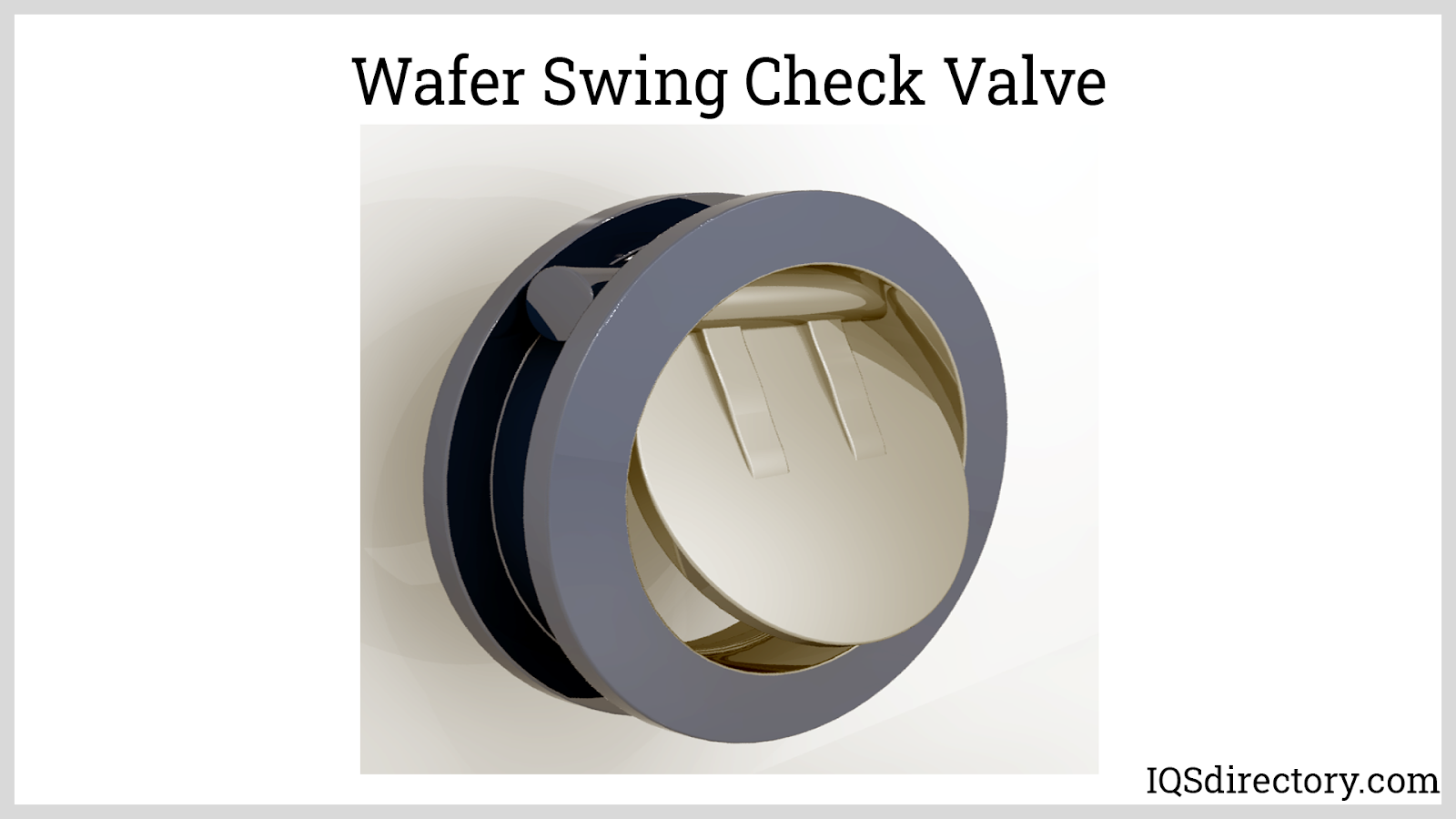
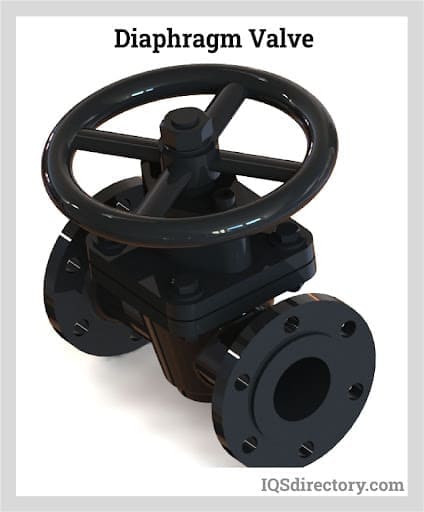
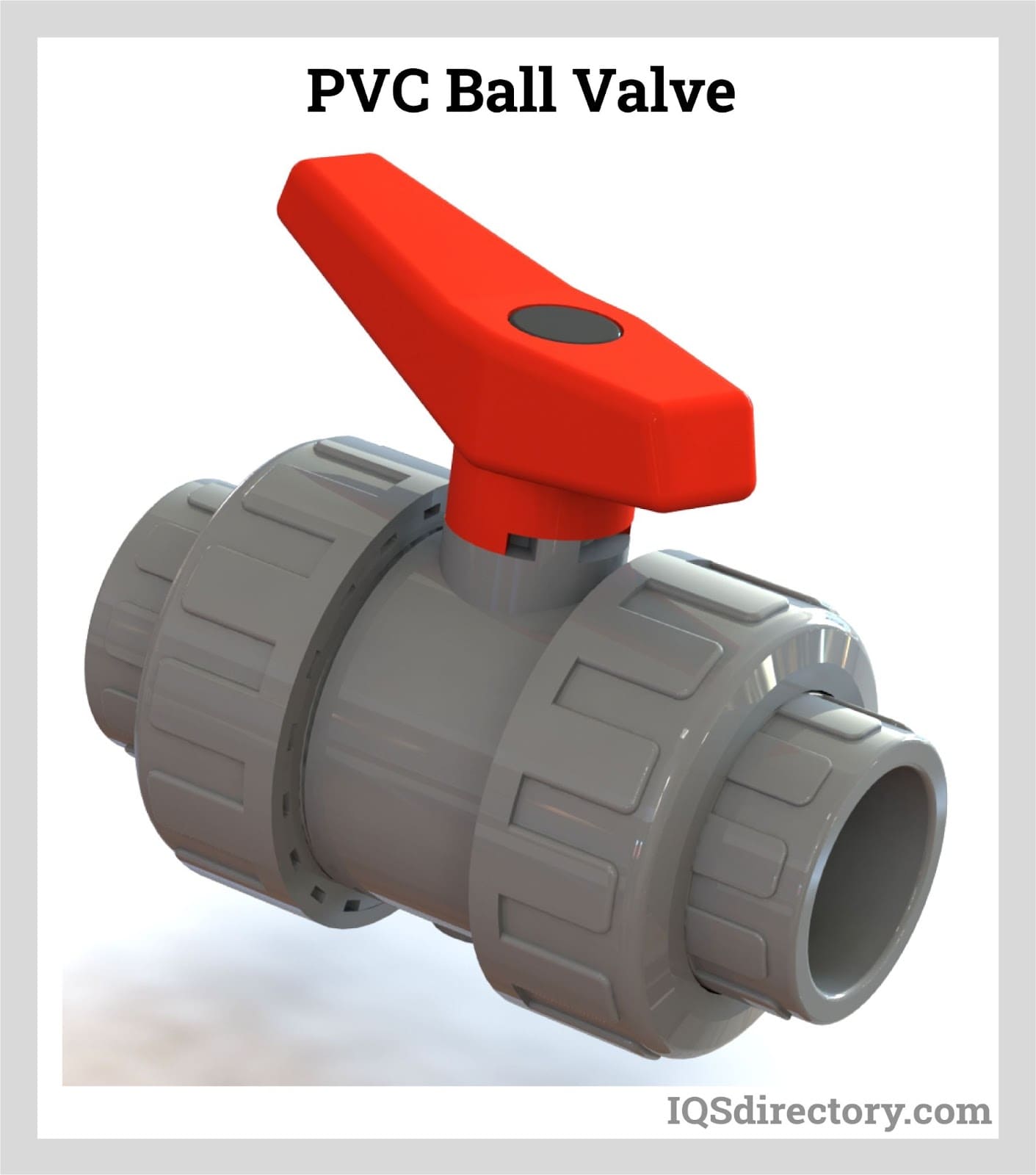
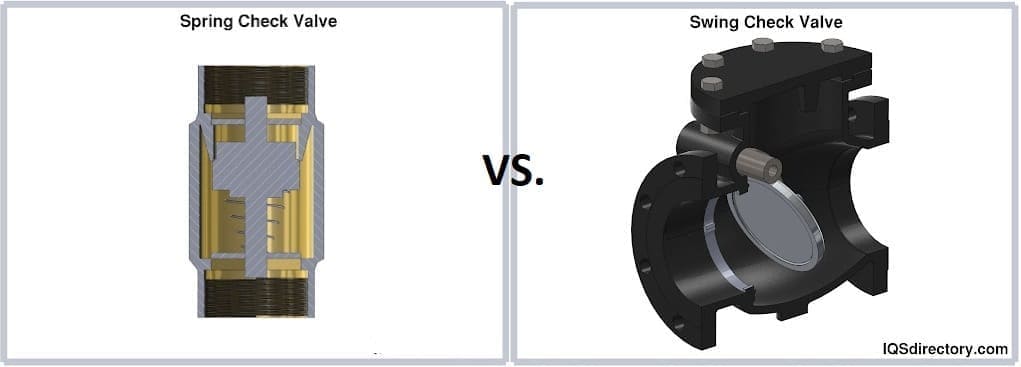
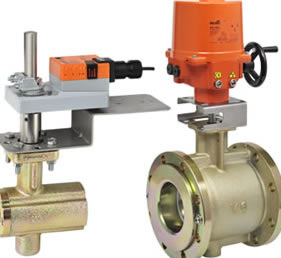 Ball Valves
Ball Valves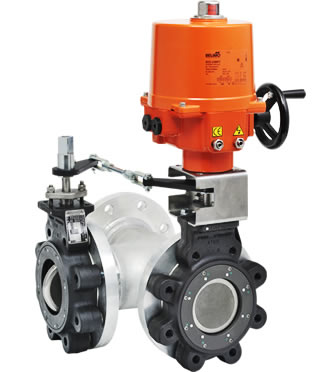 Butterfly Valves
Butterfly Valves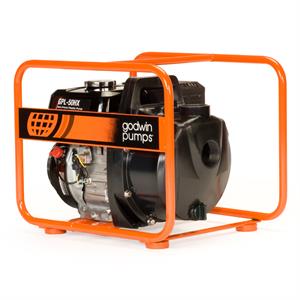 Centrifugal Pumps
Centrifugal Pumps Check Valves
Check Valves Diaphragm Valves
Diaphragm Valves Flow Meters
Flow Meters Hydraulic Pumps
Hydraulic Pumps Hydraulic Valves
Hydraulic Valves Metering Pumps
Metering Pumps Solenoid Valves
Solenoid Valves Vacuum Pumps
Vacuum Pumps Castings & Forgings
Castings & Forgings Bulk Material Handling
Bulk Material Handling Electrical & Electronic Components
Electrical & Electronic Components Flow Instrumentation
Flow Instrumentation Hardware
Hardware Material Handling Equipment
Material Handling Equipment Metal Cutting Services
Metal Cutting Services Metal Forming Services
Metal Forming Services Metal Suppliers
Metal Suppliers Motion Control Products
Motion Control Products Plant & Facility Equipment
Plant & Facility Equipment Plant & Facility Supplies
Plant & Facility Supplies Plastic Molding Processes
Plastic Molding Processes Pumps & Valves
Pumps & Valves Recycling Equipment
Recycling Equipment Rubber Products & Services
Rubber Products & Services